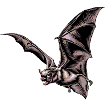Museum, University of Nebraska State

University of Nebraska State Museum: Mammalogy Papers
Document Type
Article
Date of this Version
1998
Citation
In: Evolution of Tertiary Mammals of North America, Volume 1: Terrestrial Carnivores, Ungulates, and Ungulatelike Mammals, ed. Christine M. Janis, Kathleen Scott, & Louis L. Jacobs (Cambridge: Cambridge University Press, 1998), pp. 196-227.
Abstract
The Amphicyonidae occur in North America from late Eocene (~40 Ma) to early late Miocene (~9 Ma), a span of 31 million years. In the North American land mammal biochronology, this diverse family extends from the Duchesnean to the end of the Clarendonian and is especially well represented in the Miocene (~5-24 Ma). In the Old World, amphicyonids survive no longer than in North America: The last European records are Vallesian (Dinotheriensande, Mainz Basin, Germany, Kuss, 1965, Tobien, 1980; Vallés-Penédes Basin, Spain, Crusafont-Pairó and Kurten, 1976), and the last representative may occur at about 9 Ma at Kohfidisch, Austria (latest Vallesian, Beaumont, 1984; Mein, 1989). The group is extinct by 13 Ma in eastern Asia and by about 7 Ma on the Indian subcontinent (Barry and Flynn, 1989). In Africa, amphicyonids are no longer evident after about 11 Ma, but future discoveries may improve this sparse record as Miocene faunas become better known.
Two North American subfamilies (Daphoeninae, Amphicyoninae) have been recognized, but as commonly employed they are in fact arbitrary groupings without well-founded support. Because the Amphicyoninae simply succeeded the Daphoeninae in time, the subfamilies appeared to be evolutionary grades, but the grades in North America were without substantiated phyletic connection between ancestral and descendant genera. In this chapter I advance a new hypothesis to account for the evolution and geographic distribution of amphicyonids. This hypothesis uses an improved knowledge of biogeography of amphicyonid fossils on the northern continents as a significant new source of information in deciphering their phylogenetic relationships, while at the same time recognizing the lack of reliable synapomorphic traits to ally subgroups within the family. Simply stated, the distribution of amphicyonid fossils in North America and Europe suggests the existence of two separate radiations of beardogs, both initiated in the late Eocene/Oligocene, the European termed "amphicyonine," the North American identified as "daphoenine." Thus I employ the subfamilies as monophyletic groups arising and radiating in different geographic areas, yet sharing a common ancestral popUlation (the stem amphicyonid stock) sometime in the Eocene. The distribution of amphicyonid genera in time in North America and Europe is central to the proposed concept of amphicyonid evolution advocated in this chapter: North American daphoenines are endemic to the New World, first appearing about 40 Ma and continuing to about 17 Ma. European amphicyonines originate about the same time (40 Ma) in the Old World and continue to 9 Ma in Europe, but amphicyonine lineages periodically invade North America as immigrants during the late Oligocene and Miocene. All native daphoenines are extinct by 17 Ma and are replaced by Old World amphicyonines. From this point in time until their North American extinction ( ...... 9 Ma), the beardogs of the New World are all derived from migrant Old World amphicyonines whose roots occur in European lineages.
I also recognize two additional subfamilies, the North American Temnocyoninae and European Haplocyoninae. The dental specializations of these two groups provide distinctive synapomorphic features that allow them to be identified and set apart. New World temnocyonines are plausibly derived from a haplocyonine immigrant in the late Oligocene, although each subfamily evolves its own unique dental morphologies in Europe and North America.
Abundant amphicyonid fossils have been found in both Europe and North America where the family displays a progression from generalized species of small body size to very large forms of a more specialized nature. Amphicyonids are also known from Asia and Africa where their remains are rare but of great interest in demonstrating affinity to European taxa. No amphicyonids are known from South America, and their extinction in North America preceded the interchange of faunas that occurred in the Americas during the PlioPleistocene.
Included in
Evolution Commons, Other Ecology and Evolutionary Biology Commons, Paleobiology Commons, Paleontology Commons, Terrestrial and Aquatic Ecology Commons


Comments
Copyright (c) 1998 Cambridge University Press. Used by permission.